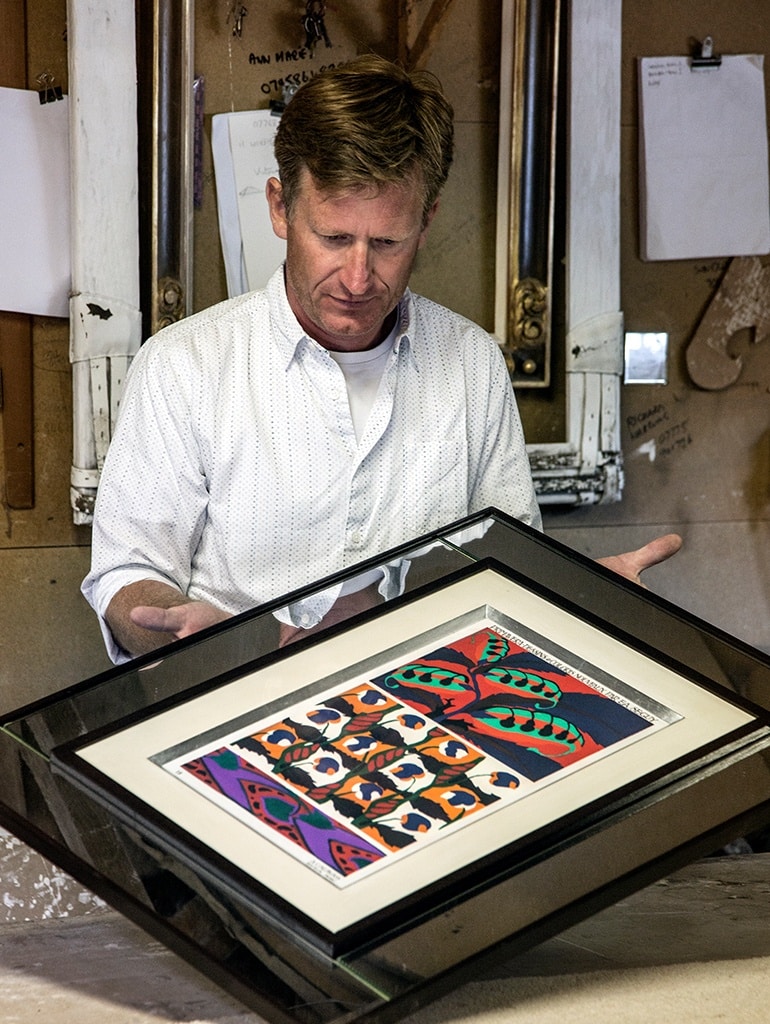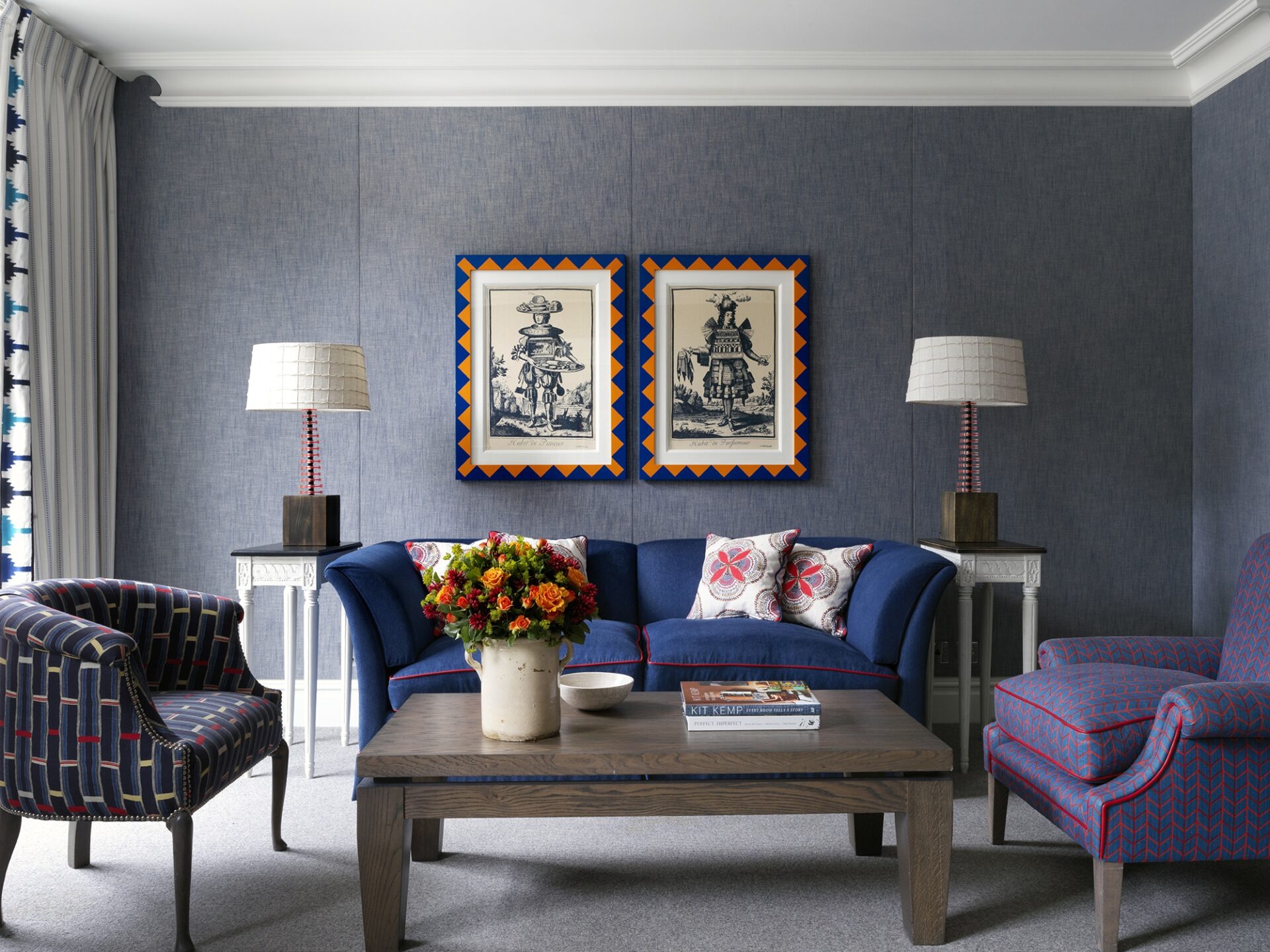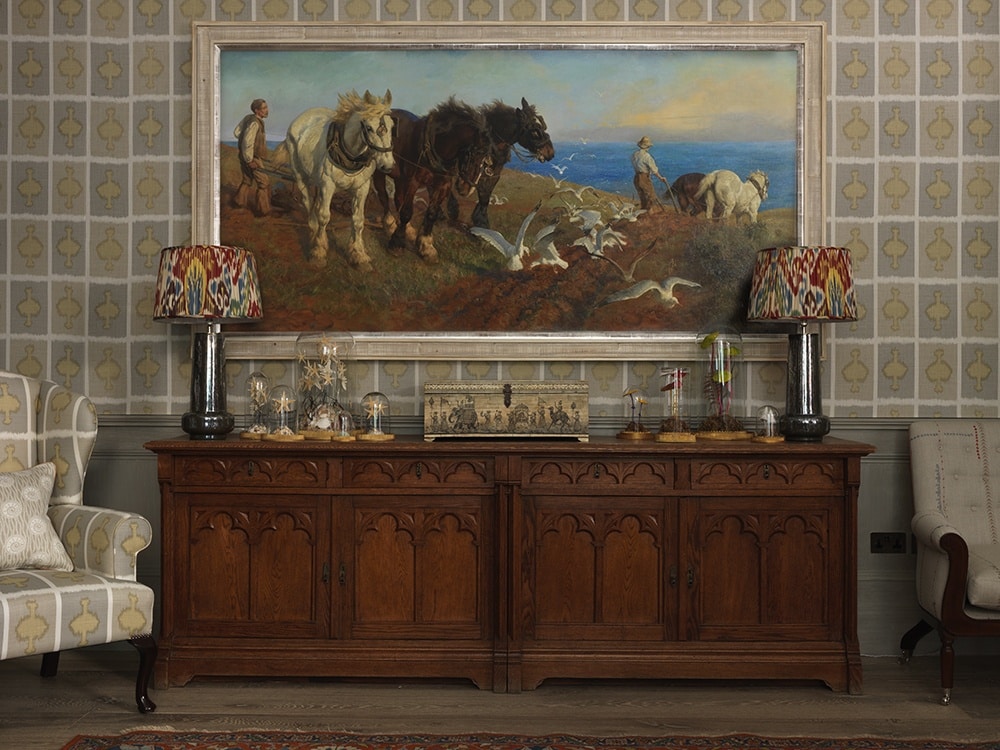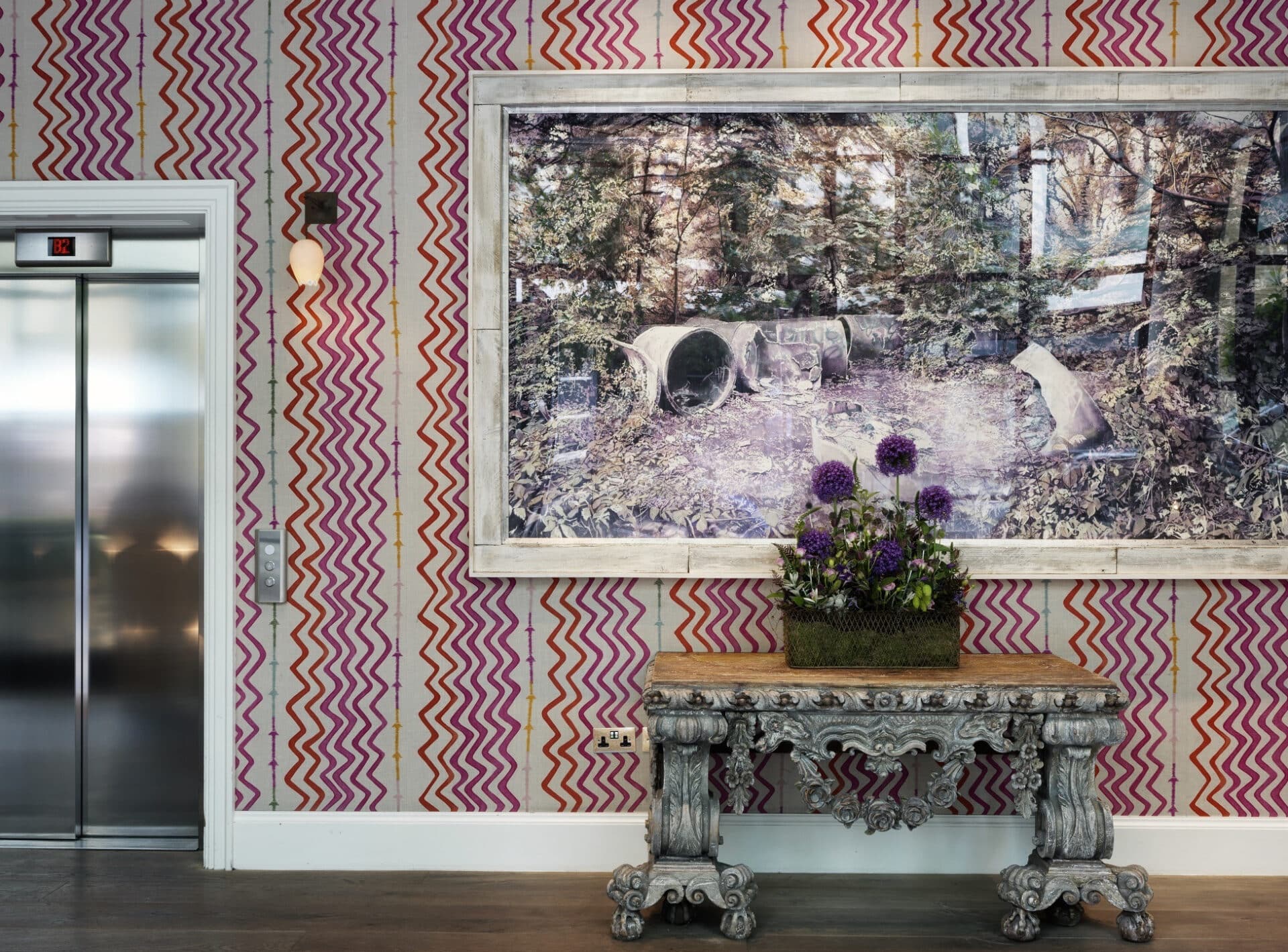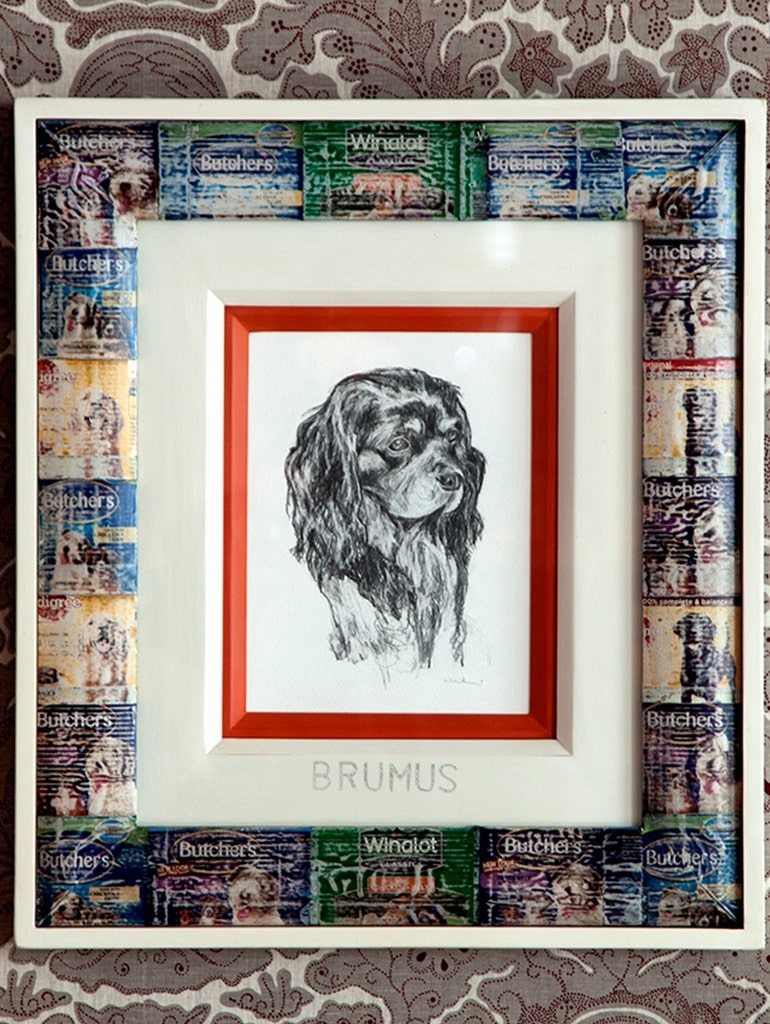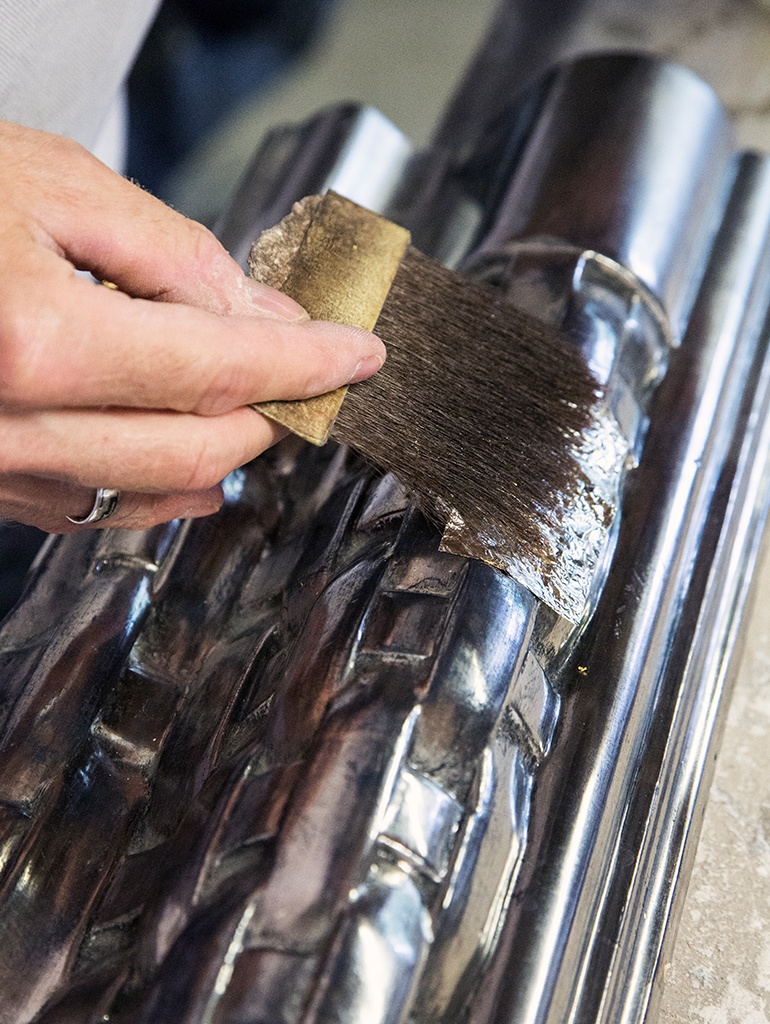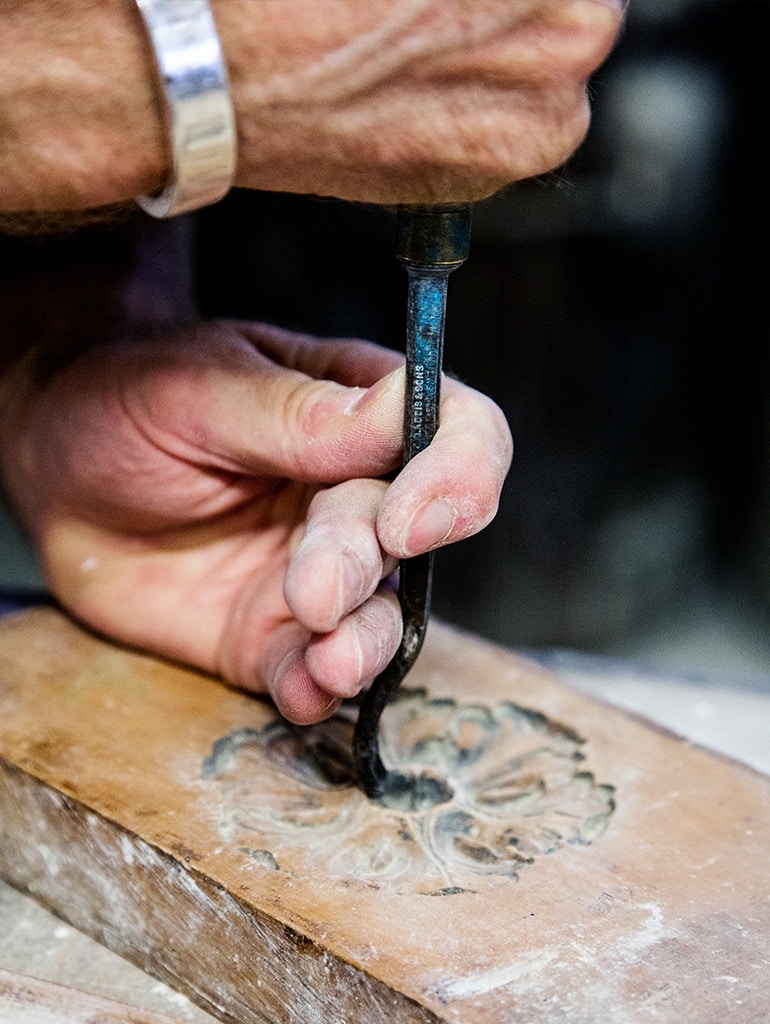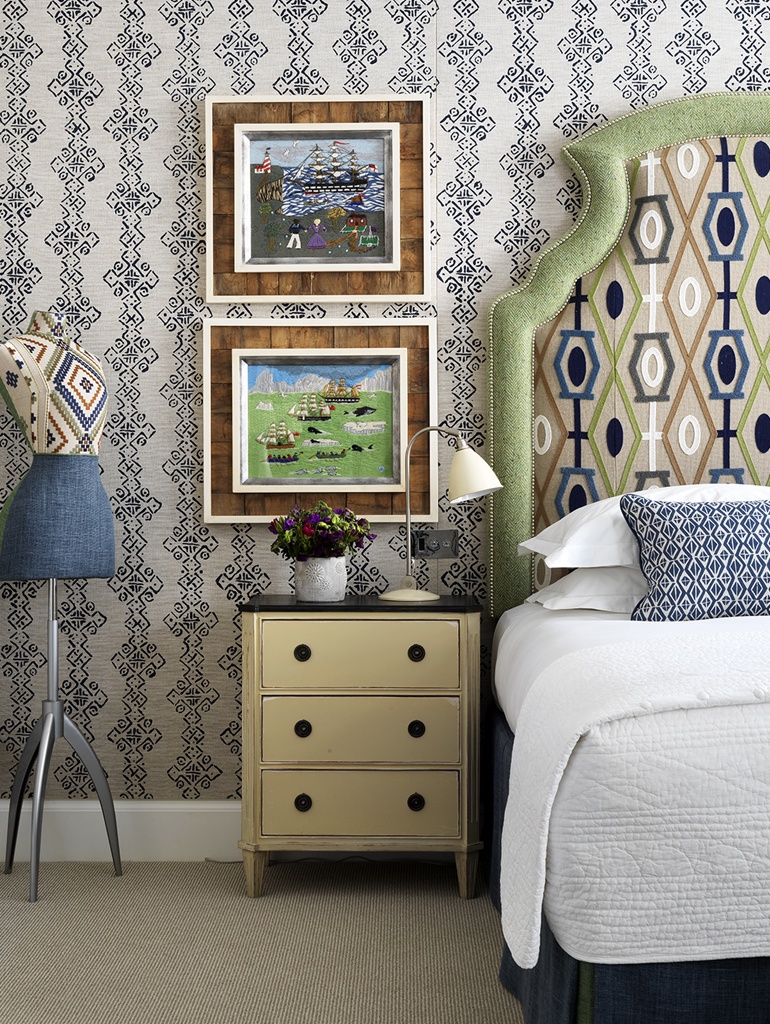You should never underestimate the importance of good framing. Working with my framer Marcus Wells is a joyous relationship. He feels free to show me new ideas and I am always happy to suggest an unusual combination.
His workshop is a cornucopia of recycled materials – recovered from skips, building sites, even the side of the road – as well as art from auctions in old-fashioned gilded frames.
Between us, there is enthusiasm, fun and never-ending discussion. Sometimes a framed picture can become a table top or a set of hand-painted organ pipes, boxed in Perspex, can work as a room divider.
We asked Marcus to answer a few of our questions about the art of framing…
What do my clients ask me all the time?
Clients ask for original and interesting ideas for frames that they won’t see anywhere else
How do you choose the frame designs?
I always approach choosing and designing a frame by thinking about what will make the artwork look as good as possible, rather than the room that it will be hanging in.
Pictures always have clues in them – a colour, a detail, a texture – which spark ideas. My natural inclination is to make our frames the stars of the show, but I often have to stop myself getting carried away – the wonderful thing about framing is that really anything is possible!
If an artwork is purely decorative – for instance the linen toile de jouy tea towels – we can really go to town with a funky zigzag pattern in bright contrasting colours which really pack a punch.
What are your favourite styles and why?
That’s a tricky question to answer as there are so many! I suppose if I have to choose one frame style it would have to be our antique timber frames. I collect old garden fences, sheds, floor boards – the more gnarled and characterful the timber, the better – and we use them for frames, often with a limed finish. We framed the Juliet Losq paintings at Ham Yard Hotel in that style.
If the painting is important in its own right, we need to design a frame that will complement the painting rather than overpower it – for instance the antique gesso frame that we made for the Lucy Kemp Welch painting in the library at Ham Yard Hotel. I think it shows the painting off to its best but also sits comfortably in the room; it is traditional with a modern twist.
I love the idea of giving materials a new life when they’ve been discarded. I collect huge amounts of “things” – buttons, knitting needles, keys, kebab sticks, printers blocks, fabrics… and we always find a use for them. I love using mirror glass in a frame, it gives a crisp, tailored look and is particularly effective when used in contrast with something organic like driftwood or bark.
What are the trends coming up?
To be honest I have no idea – I don’t follow trends. The only exception to that is with colour and colour combinations – sometimes I realise that I have been influenced inadvertently by a trend and a colour that I have seen in a shop, in an article of clothing, in a fabric, on a wallpaper, in a set design for a ballet or opera.
What are your favourite design books?
I’m ashamed to say that Instagram is my favourite design book at the moment – it’s an incredible source of inspiration…a sign of the times I’m afraid!
What advice would you give to people creating their own frames / displays in their own home?
Be bold not bland, take a risk, have the strength of your convictions – and don’t worry about what anyone else thinks, because you can never please everybody!
How do you think differently about design?
I’m not sure if I can claim to think differently about design, but my personal ethos is to never feel restricted by anything; anything is possible with thought and hard work.
Who was your first client?
My first major client was – in fact – Kit Kemp! I used to work for a gallery down the Kings Road in the early 1990s and Kit came in one day and we got talking – I can’t remember which hotel she was working on – but to cut a long story short when I set up my own business in 1996 I got in touch with her again and that was the start of a thoroughly enjoyable and rewarding collaboration.
What mistakes do you see others making in their home?
I always think it’s a shame when people worry about what others think and therefore don’t follow their gut instinct by erring on the side of caution – be bold, take a risk and be original I say!


